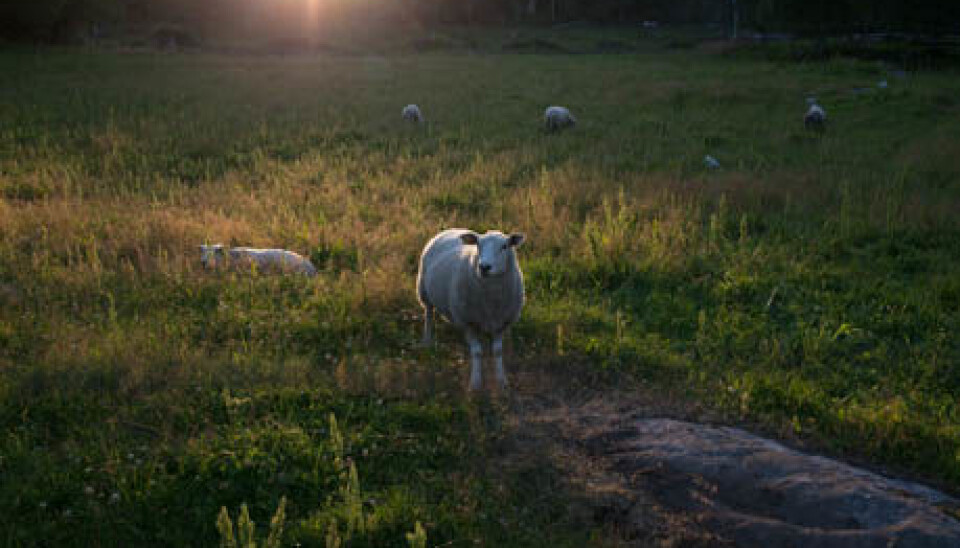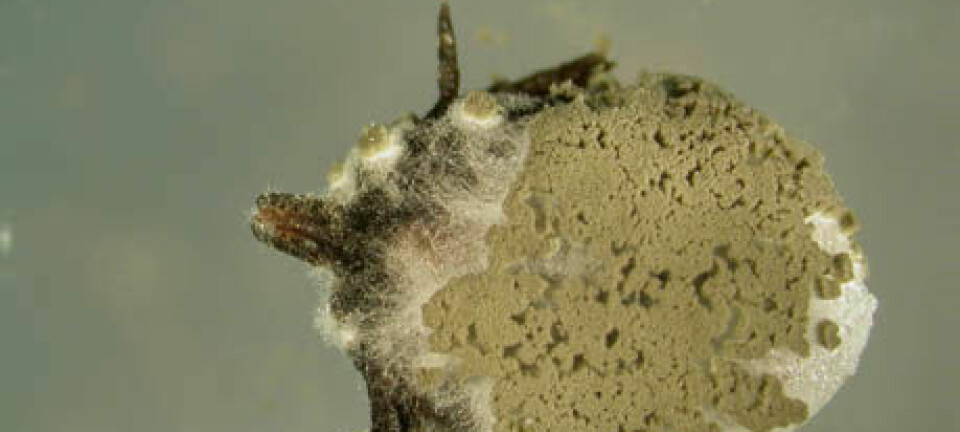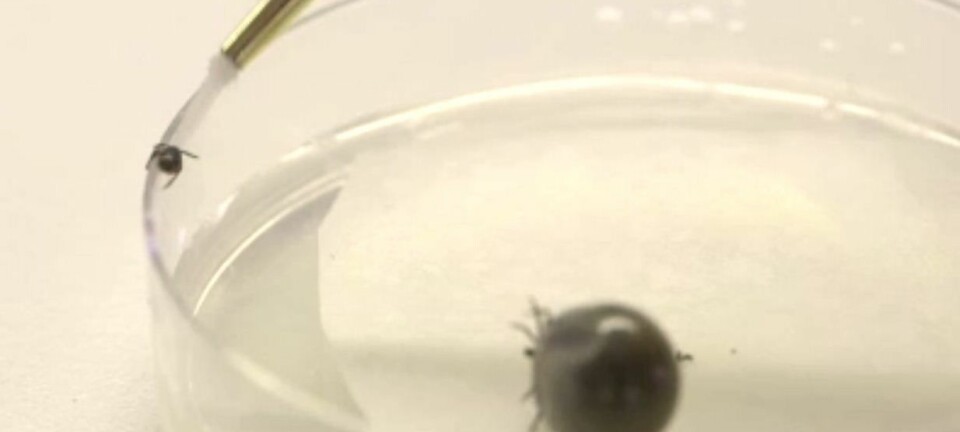This article was produced and financed by Norwegian Institute for Agricultural and Environmental Research

Ticks kill sheep
Predator attacks are not the only explanation for high lamb mortality in Norway. Ticks are also on the list of suspects.
Denne artikkelen er over ti år gammel og kan inneholde utdatert informasjon.
In some lamb herds, a mortality rate of 30 percent has been recorded, albeit, no predators have been involved in these losses. The situation is so serious that the sheep industry could be under threat.
Tick-bites might be one of the reasons for the major loss of sheep.
Researchers are now trying to help the industry implement preventative measures. The answer may be found somewhere within the genetics of the sheep and the course of the disease, assessment and control of tick populations and biological control of ticks.
Weakens the immune system
Tick-bites in sheep may result in the disease tick-borne fever (TBF), induced by the bacterium Anaplasma phagocytophilum (A.ph). TBF causes high fever and weakens the immune system.

“It is estimated that approximately 300,000 lambs are exposed to this bacteria each year. However, they do not necessarily die from the infection”, says tick researcher Lise Grøva at Bioforsk Organic at Tingvoll in Norway.
The disease itself is not fatal, but makes sheep more susceptible to secondary infections.
“Arthritis is the most common disease that can arise. Illness normally occurs 10-14 days after grazing starts. Blood tests show that almost all the lambs are infected during the season in tick infested areas.”
The direct cause of death due to TBF is often an acute pasteurella infection - a bacterial disease which can cause acute blood poisoning with inflammation of the heart sac, heart, lungs or digestive organs. It is therefore recommended to vaccinate sheep against pastuerella in areas where tick-borne fever is prevalent.

Disinfection of the umbilical cord in lambs immediately after birth has also been effective. It prevents new bacteria from entering the bloodstream. Bacteria can survive in the body for a long time and can attack and cause disease if the immune system is weakened.
There are no exact figures as to how many lives ticks take compared to predators. There have been attempts to uncover this by using radio transmitters to monitor the sheep. However, in practice, it has proved difficult to find the mortalities in order to say anything about the cause of death with this type of monitoring.
Breeding resistant animals
Work is currently in progress to develop measures that may help sheep tolerate tick bites better. Breeding resistant animals is one important research area.
“We know that individuals respond differently to infection. Some lambs experience a shorter period of fever and a shorter period with poor immune system after an infection than others. We are also looking at whether some individuals have more ticks than others, and whether this has an influence on the growth in lambs”, says Grøva.
She emphasizes that having robust animals with good immune systems is a prerequisite for sheep husbandry in tick areas.
There is also an on-going study that looks at the effects of long acting acaricides against ticks.
“The usage of acaricides against ticks is widespread, but we question whether it is right to utilise them as it is seems that lambs are infected despite the use of such remedies.”
Could infect humans
The A.ph bacteria can also infect humans through tick bites. However, there is little knowledge of the occurrence and the consequences of this.
“It is presumed that the infection can cause flu-like conditions. In people with impaired immune systems an infection can cause pneumonia, but as far as we know nobody has died from this”, says Grøva.
Sick sheep are not slaughtered. Some sheep can be healthy carriers, where the meat is considered safe. The bacterium is not absorbed through the gut, and it will not survive freezing treatment or boiling.
Grøva says it is possible that the research on sheep and ticks could benefit humans. Bioforsk is also attempting to determine if fungal spores can have impact on tick populations.
“This could contribute in helping us control tick populations, for example in restricted areas such as spring pasture for sheep. This could also be of interest as far as recreational areas are concerned.”
Translated by: Siri Elise Dybdal

































